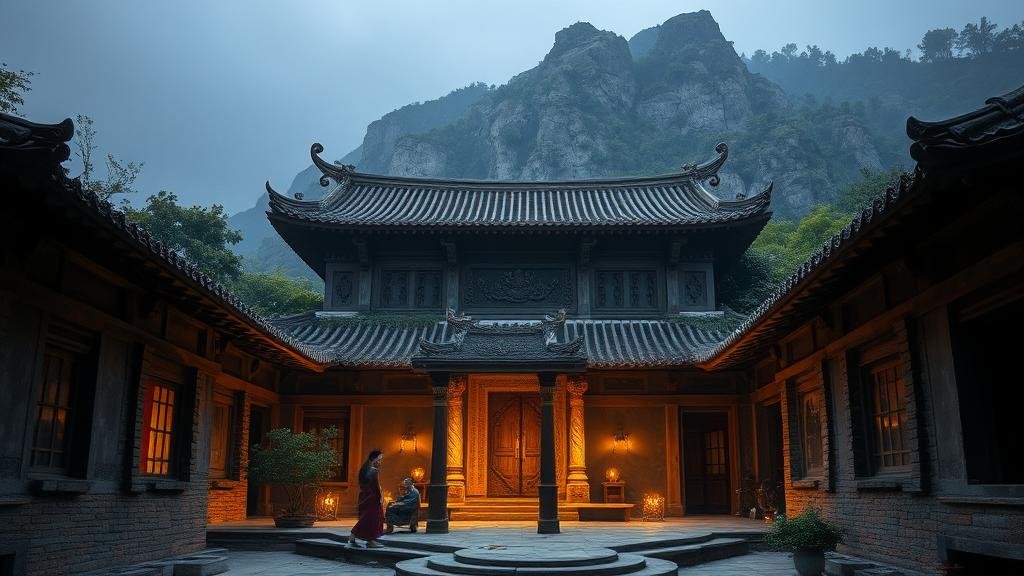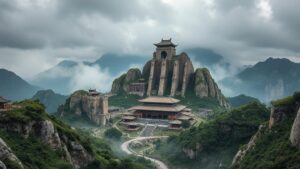Investigating the “Sanctuary of Eternal Rest,†where ancient monks sought immortality.
Investigating the “Sanctuary of Eternal Restâ€
The “Sanctuary of Eternal Rest†is a compelling historical site believed to have been frequented by ancient monks who sought the secret to immortality. This mysterious sanctuary, located in the remote mountain regions of Tibet, offers not only a glimpse into early monastic practices but also into the age-old human desire for eternal life. This article delves into the historical context, practices, and significance of this sanctuary, aiming to provide a comprehensive understanding of its place in ancient beliefs and culture.
Historical Background
The Sanctuary of Eternal Rest dates back to the 7th century CE, during the height of early Tibetan Buddhism. Following the arrival of Buddhism from India, Tibetan monks began to adopt and adapt various practices aimed at spiritual enlightenment. The sanctuary was specifically established in the region known today as the Kham Province in eastern Tibet, an area known for its dramatic landscapes and spiritual ambiance.
This period was marked by the search for transcendental existence, where monks engaged in rigorous meditation and ascetic practices. The desire for immortality was not merely about prolonging life; it encompassed a broader quest for enlightenment and unity with the divine. According to historical texts, the monks believed that through specific rituals and meditation, they could unlock the secrets of life beyond death.
The Monastic Practices
Central to the monks quest for immortality were several practices that were thought to enhance physical and spiritual longevity. These included:
- Prolonged Meditation: Monks often engaged in meditation marathons lasting days or even weeks. It is believed that such practices helped them attain altered states of consciousness, where they could commune with the eternal.
- Dietary Restrictions: A strict vegetarian diet, often including only simple grains and herbs, was observed. This was thought to purify the body and mind.
- Chanting and Mantras: Utilizing specific mantras during meditation rituals was believed to invoke divine protection and longevity.
These elements combined were thought to forge a path to immortality. A notable example is the practice of “sky burial,†where monks believed that the exposure to nature at the end of life aided in their spiritual journey and ultimate transcendence.
Archaeological Findings
Modern-day archaeological investigations in the area surrounding the Sanctuary of Eternal Rest have yielded fascinating artifacts that reflect these ancient practices. Researchers have discovered:
- Ancient Texts: Scripts detailing rituals and beliefs related to immortality have been uncovered, providing invaluable insight into the monks spiritual life.
- Monastic Remains: Remains of old monastic dwellings have been found, indicating a thriving community of practitioners dedicated to their craft.
- Sacred Artifacts: Items such as prayer wheels and statues linked to specific deities related to death and reincarnation illustrate the intertwined nature of their beliefs.
One particularly significant find is a series of monk graves that were rigorously arranged, revealing meticulous burial practices thought to assist the departed in their journey to the afterlife.
Modern Implications
The sanctuary continues to attract scholars and spiritual seekers alike. It serves not only as a historical site but also as a spiritual pilgrimage location for those looking to explore concepts of life and death. Modern interpretations of the monks quest for immortality reflect a growing interest in wellness and spiritual practices. The key implications include:
- Mindfulness and Meditation: The practices initiated by these monks have permeated contemporary culture, with mindfulness and meditation becoming widely embraced for their mental and physical health benefits.
- Exploration of Life Sciences: In the scientific community, the study of aging and longevity continues to find inspiration from ancient practices, which prompts ongoing research into holistic approaches to health.
Conclusion
The Sanctuary of Eternal Rest serves as a profound reminder of the human pursuit of immortality throughout history. While the monks may not have unlocked the secrets to eternal life in a literal sense, their practices and beliefs have contributed significantly to our understanding of spirituality and wellness. The ancient wisdom found within the sanctuary echoes in modern society, reminding us of the enduring quest for connection beyond the physical realm.
As we continue to explore and learn from historical sites like the Sanctuary of Eternal Rest, we reveal not only the complexities of ancient belief systems but also how they continue to resonate with our contemporary pursuit of meaning and longevity.


